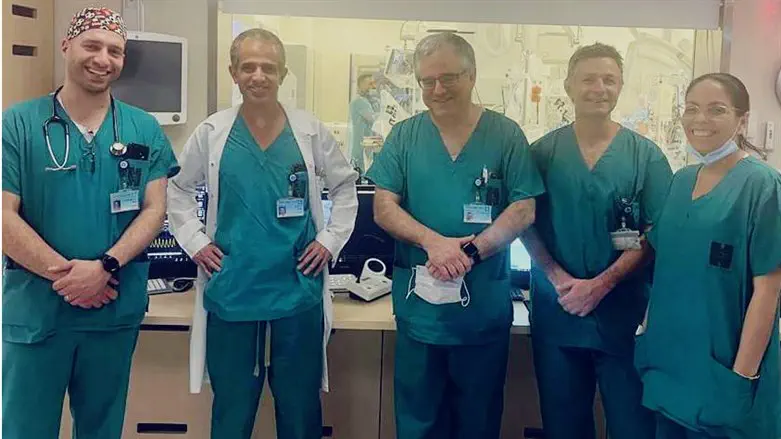
A few weeks ago, a 76-year-old patient in severe cardiac shock arrived at Hadassah Hospital Ein Kerem, with a history of critical stenosis of the aortic valve.
The patient suffered from severe vascular disease that made it impossible to use the accepted approach through the groin artery and the alternative approaches were disqualified due to anatomical limitations and previous bypass surgery. Dr. David Planer, Director of the Catheterization Department at Hadassah Ein Kerem explains: "Until two decades ago, access to patients who required an aortic valve replacement was a surgical approach that involved opening the chest, and a long and difficult recovery.
About two decades ago, with the development of technology, a percutaneous approach to replacing the valve was developed, which is performed in a catheterization through the groin artery. In cases where access from the groin artery is impossible, there are alternative approaches that allow the operation to be performed.
The patient who came to us urgently needed a valve transplant and no accepted and common options were suitable for him due to various diseases from which he suffered. The case presented us with a real challenge and we realized that we had to think outside the box in order to save his life."
Dr. David Planer, Director of the Catheterization Department, and Dr. Gabby Elbaz-Greener, senior catheterization specialist at Hadassah Ein Kerem Hospital, who head the Structural Heart Interventional program at our institution, together with Dr. Amit Korach, a senior cardiac surgeon, decided to implant the valve using a unique approach through the cervical artery (carotid artery), a procedure that has never before been performed in Israel.
"This is a very complex operation, to date only performed in a number of isolated cases in major centers around the world. The operation is performed using a hybrid approach; i.e. with catheterization specialists and surgeons. Surgical exposure is performed and control of the carotid artery through which the valve is delivered and implanted in the patient's heart," states the transplant team, adding "following a thorough examination of the patient. After seeing that he meets the anatomical criteria, we approached the patient and his family and shared with them the discussions that were held and the team’s recommendation. In view of the life-threatening danger and lack of therapeutic alternatives, it was decided together to move forward with the procedure."
In a collaborative effort between Dr. David Planer, Dr. Gabby Elbaz-Greener, Dr. Amit Korach, Prof. Ronen Beeri, Director of the Echocardiography Unit and a Senior Anesthesiologist, and Dr. Tamer Abu Jreis, the valve was successfully replaced with this unique catheterization approach.
“Beyond choosing the right patient and the high technical capacity of the team, in a procedure such as this, it is of utmost importance for there to be harmonious work with a common language between the collaborators who come from different disciplines" explains Dr. Planer. "Thankfully, the operation went smoothly, without complications, and we are proud to be the first team in Israel to carry it out and pave the way for an additional therapeutic option for these seriously ill patients. The patient was discharged to rehabilitation and we wish him a full recovery."
